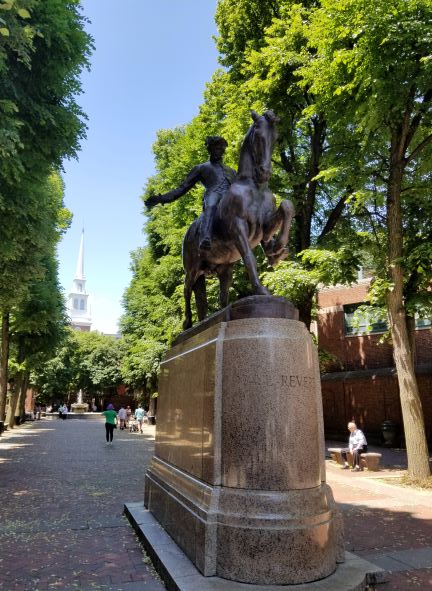As early as 1646, the North End had a distinct community and by the end of that decade had its own church, the North Meeting House, with the popular (and powerful) preacher—Increase Mather—at its head. By the mid-1600s, the North Burying Ground, now called Copp’s Hill Burying Ground, registered grave markers. The neighborhood continued to grow throughout the 1700s and the—now famous—Old North Church was built. Its interior with elaborate box pews gave religious sustenance to the neighborhood’s well-heeled citizens, as well as the working-class. By the early 20th century, Italian and Jewish immigrants dominated the increasingly commercial neighborhood. Today, one can still feel the cultural imprint of both groups in the area. Boston’s North End has a long and rich history and, thankfully, some of its historic sites still stand for viewers to visit. Here are some to visit.
Historical Sites in Boston’s North End
Copp’s Hill Burying Ground—This was Boston’s largest colonial burying ground dating from 1659 when it was known as the North Burying Ground. Over 10,000 bodies are buried there along with thousands of unmarked graves of African Americans. Notable members of the Mather family—Samuel, Increase, and Cotton—are all buried there. Prince Hall, a former slave and anti-slavery activist who fought in the Continental Army and founded the Black Masonic Order also rests in eternal peace at Copp’s. Noted African-American poet, Phyllis Wheatley, who had been enslaved and was emancipated allegedly is buried there, as well.
The Prado—also known as the Paul Revere Mall is located between Old North Church and St. Stephen’s Church. A famous sculpture of Paul Revere by artist Cyris Dallin dominates the Prado and provides a perfect snapshot of history of Paul Revere riding a horse with the Old North Church in the background.
Pierce/Hichborn House—built around 1711, the house is one of the earliest brick homes in Boston still standing. It’s an example of early Georgian architecture and is next-door to the Paul Revere House.
Paul Revere House—Revere purchased this 1680 house in 1770. Built on the site of the Mather House, this home was where he and his family lived when he made his famous midnight ride immortalized by Henry Wadsworth Longfellow. It has been restored to resemble its late 17th century appearance and the furnishings inside show life in the 18th century. Historical interpreters explain the house,…
Click Here to Read the Full Original Article at Roaming Historian…
